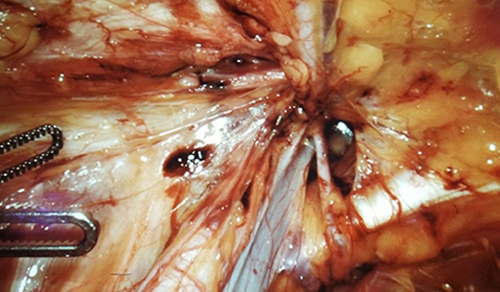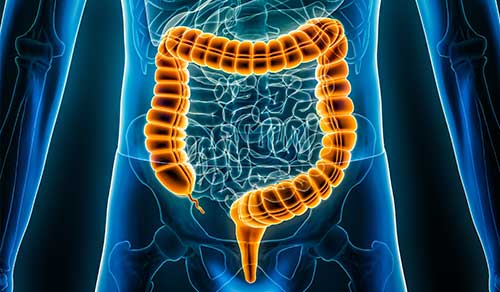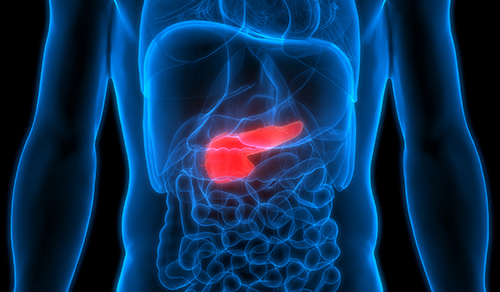Focus on Faculty: Rehabilitation Medicine
Julia L. Iafrate, DO

Julia L. Iafrate, DO
As a former dancer, alpine skier, and collegiate soccer player, it was natural that Julia L. Iafrate, DO, would specialize in sports and musculoskeletal rehabilitation medicine. A native of Fonthill, Ontario, Canada, Dr. Iafrate suffered many musculoskeletal injuries over the years, allowing her a keen understanding of the medical challenges her patients face. “It helps to be able to ‘talk the talk’ with the dancers and athletes I treat — I think they tend to have more faith in a provider who understands what they are experiencing,” says Dr. Iafrate, who joined the Department of Rehabilitation and Regenerative Medicine at NewYork-Presbyterian/Columbia University Irving Medical Center in August 2017.
After earning her medical degree at Midwestern University, Arizona College of Osteopathic Medicine, Dr. Iafrate completed a residency in physical medicine and rehabilitation at the Mayo Clinic, followed by a sports medicine fellowship at the University of Iowa. During her fellowship, she worked as team physician for the University of Iowa Hawkeyes football, men’s basketball, and men’s and women’s gymnastics teams.
Dr. Iafrate’s primary clinical interests include the full range of musculoskeletal injuries, diagnostic and interventional ultrasound-guided procedures, college and professional level sports coverage, dance medicine, global health and nutrition, and resident education. She currently serves as one of the team physicians for the USA Ski Team and Columbia University Athletics.
Dr. Iafrate has particular expertise in minimally invasive procedures, including percutaneous tenotomies and fasciotomies, which use a technique that emulsifies damaged tissue with ultrasonic energy without disturbing the surrounding healthy tendon tissue. “I often use this approach as an alternative to surgery for patients with chronic tendon damage to their Achilles, plantar fascia, or patellar tendon, as well as tendons of the shoulder or elbow,” she says.
Dr. Iafrate, who also practices at the department’s office in Riverdale, New York, and runs a dance medicine clinic at the midtown location, is thrilled to be starting her medical career at NewYork-Presbyterian. “This is an absolutely phenomenal hospital with so many well-trained specialists,” she says. “I’m passionate about the field of rehabilitation and regenerative medicine. I hope I can offer a fresh perspective and especially contribute to the sports and dance medicine program at Columbia.”
Michael F. Saulle, DO

Michael F. Saulle, DO
When Michael F. Saulle, DO, was a kid watching a Yankees game with his dad in which Don Mattingly pulled a muscle at first base, he was more concerned if Mattingly was going to be ok. And what impressed him most was the guy in the white shirt who ran out onto the field to attend to him. “While most kids wanted to be Don Mattingly, I wanted to be the guy in the white shirt,” recalls Dr. Saulle.
Today, Dr. Saulle has realized his dream as a physiatrist specializing in nonoperative sports medicine in the Department of Rehabilitation Medicine at NewYork-Presbyterian/Weill Cornell Medical Center. Dual board certified in sports medicine and physical medicine and rehabilitation, Dr. Saulle has treated athletes at every level, from the weekend warrior to professional athletes. His expertise includes minimally invasive image-guided procedures for the diagnosis and treatment of musculoskeletal injuries using ultrasound and fluoroscopy, as well as regenerative treatments, such as platelet-rich plasma injections.
An avid sports enthusiast himself, Dr. Saulle played baseball for 17 years through almost every level. “In college I transitioned over to rowing crew, and then I realized I was not built as an endurance athlete and so I switched to rugby,” says Dr. Saulle, who continues to pursue outdoor recreational activities, including rock climbing and skiing.
After earning his medical degree from Touro College of Osteopathic Medicine, Dr. Saulle completed residency training in physical medicine and rehabilitation at NewYork-Presbyterian, where he served as Chief Resident, followed by a fellowship in Interventional Spine and Sports Medicine here. “I was drawn to sports medicine specifically because it provides a comprehensive knowledge base for treatment of bones, joints, nerves, and muscles, and creates an overall treatment perspective for any type of low back, knee, and elbow pain, and any acute or chronic injury,” he says.
Dr. Saulle, who also practices at the Weill Cornell Medicine Center for Comprehensive Spine Care, believes patient education is key to successful treatment, and he ensures that each of his patients understands his or her condition, treatment options, and lifestyle modifications to optimize their musculoskeletal health. “I spend time getting to know what motivates my patients and the things they love to do because, ultimately, their goal and my goal has to be to get them back to those things,” he says.
Joseph P. Solberg, DO

Joseph P. Solberg, DO
Bringing particular expertise in interventional spine and pain medicine, Joseph P. Solberg, DO, joined the Department of Rehabilitation and Regenerative Medicine at NewYork-Presbyterian/Columbia University Irving Medical Center in November 2017. Dr. Solberg is a key member of the Daniel and Jane Och Spine Hospital at NewYork-Presbyterian Allen Hospital, where he provides nonoperative spine care as part of the Spine Hospital’s integrated, multidisciplinary approach to the treatment of spine disorders.
With the ultimate goal of improving a patient’s quality of life, Dr. Solberg offers expertise that ranges from physical exercise to fluoroscopic or ultrasound-guided injections to medications and complementary therapies for both pain management and increasing functional capabilities. “We know that pain is both a physical and emotional experience, so treating pain from a multimodal, multidisciplinary platform is what will be most helpful to patients,” says Dr. Solberg. “It’s not just doing an injection or providing physical therapy. We also need to address the behavioral component and incorporate complementary therapies. A combination of these approaches is what will really make the difference.”
For chronic low back pain, Dr. Solberg seeks to employ non-opioid and innovative therapies. “We are transitioning away from using opioids for chronic non-malignant back pain, going more to the regenerative therapies and other opioid-sparing approaches, such as neuromodulation,” explains Dr. Solberg. “There is a role for opioid medications in terms of acute pain, cancer pain, and post-surgical pain, but we need to carefully consider the risk versus the benefit of these medications for the chronic pain population.”
Dr. Solberg’s research focuses on vertebral compression fracture, a condition affecting some 1.5 million individuals. “People can have chronic pain even after the fractures heal,” he says. “We’re looking at the pain generation not so much in the vertebral body, but in the facet joints and facet joint capsule due to biomechanical changes with the spine. There is a paucity of evidence on how these posterior elements could be causing some of the chronic pain in vertebral compression fracture in the lumbar spine.” Dr. Solberg and his colleagues are now developing a study to look at treating the posterior element pain with the goal of providing another option to help patients who continue to have pain from compression fractures.
Prior to joining Columbia, Dr. Solberg served on the faculty at the University of California Davis. Double board certified in physical medicine and rehabilitation and pain medicine, he received his medical degree at Western University of Health Sciences, followed by residency training in physical medicine and rehabilitation, serving as Chief Resident, at the University of California Davis. He then pursued fellowship training in pain medicine at the University of California Los Angeles and West Los Angeles VA Medical Center.
Katherine Yao, MD

Katherine Yao, MD
Having been a competitive gymnast at the junior Olympic level and a member of Yale University’s NCAA Division I team, Katherine Yao, MD, well understands the obstacles that athletes of all ages face and the challenges of injury recovery. “I did gymnastics for most of my young life and I feel a particular connection to adolescents who compete in sports. They tend to have a lot of overuse injuries. I’ve been through it and I know what it’s like,” says Dr. Yao, a physiatrist specializing in pediatric and adult sports medicine in the Department of Rehabilitation Medicine at NewYork-Presbyterian/Weill Cornell Medical Center caring for patients at both Weill Cornell and NewYork-Presbyterian Lower Manhattan Hospital.
Dr. Yao earned her medical degree from Albert Einstein College of Medicine and then completed her residency in physical medicine and rehabilitation at NewYork-Presbyterian, followed by a sports medicine fellowship at Harvard University’s Boston Children’s Hospital. While there, Dr. Yao treated dancers and musicians with the Boston Ballet, Boston Conservatory, and Berklee College of Music. She also served as team physician for Northeastern University’s Division I women’s hockey team and the Middlesex High School football team.
Dr. Yao’s expertise in nonoperative diagnostics and therapies includes ultrasound-guided injections, ultrasound-guided tenotomy, platelet-rich plasma (PRP) injections, prolotherapy, and other advanced regenerative medicine interventions. Her research is focused on the development of young athletes, particularly gymnasts, and how injury affects their growth patterns. “I hope to do more investigations on the regenerative techniques involving PRP and stem cells,” says Dr. Yao. “In the older population, we need to demonstrate more clearly the efficacy of these different regenerative medicine approaches.”
Dr. Yao plans to work closely with high schools and colleges in the community, as well as with the Weill Cornell Center for the Performing Artist. “Every patient is unique in his or her own way and should be treated holistically,” adds Dr. Yao. “I strive to understand my patients’ challenges from their perspective to achieve the best medical outcomes and help them return to doing what they love.”
Related Publications

Bringing Rehabilitation Medicine to the Developing World

Dual Honors for Dr. Joel Stein








